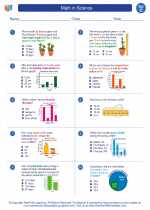Bacteria
Bacteria are single-celled microorganisms that can be found in various environments, including soil, water, and the human body. They are classified as prokaryotes, which means they lack a nucleus and other membrane-bound organelles. Despite their small size, bacteria play crucial roles in the environment and have both positive and negative effects on human health.
Characteristics of Bacteria
1. Cell Structure: Bacteria have a simple cell structure without a nucleus. Their genetic material is found in the nucleoid region of the cell.
2. Shapes: Bacteria can be classified based on their shapes, including cocci (spherical), bacilli (rod-shaped), and spirilla (spiral-shaped).
3. Movement: Some bacteria have flagella that allow them to move, while others may use other mechanisms such as gliding.
4. Nutrition: Bacteria can be autotrophic (producing their own food through photosynthesis or chemosynthesis) or heterotrophic (obtaining nutrients from organic matter).
Role of Bacteria
1. Environmental Cycling: Bacteria play a crucial role in the cycling of nutrients such as carbon, nitrogen, and sulfur in the environment.
2. Food Production: Certain bacteria are used in the production of foods such as yogurt, cheese, and pickles through processes like fermentation.
3. Human Health: While some bacteria can cause diseases, others are beneficial and are used in the production of antibiotics and other medications.
Study Guide
Here are some key points to remember when studying bacteria:
- What are the characteristics of bacteria?
- How are bacteria classified based on their shapes?
- What are the different mechanisms of movement in bacteria?
- Describe the nutritional strategies of bacteria.
- What roles do bacteria play in the environment?
- Give examples of foods produced with the help of bacteria.
- Explain the impact of bacteria on human health.
Understanding the characteristics and roles of bacteria is important for comprehending their impact on the environment and human health.
.◂Science Worksheets and Study Guides Third Grade. Math in Science

 Worksheet/Answer key
Worksheet/Answer key
 Worksheet/Answer key
Worksheet/Answer key
 Worksheet/Answer key
Worksheet/Answer key
